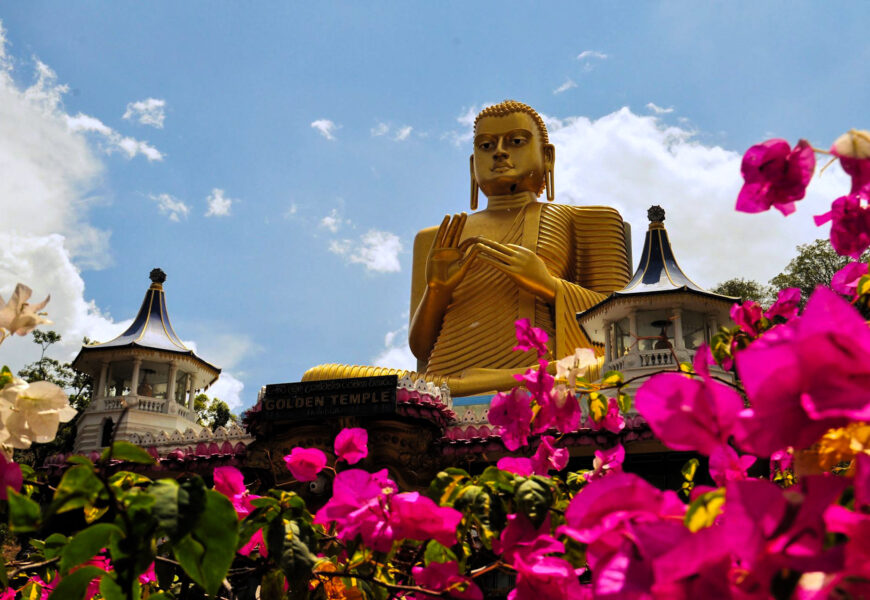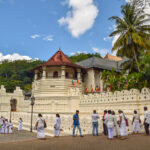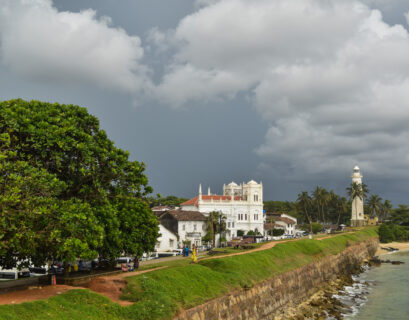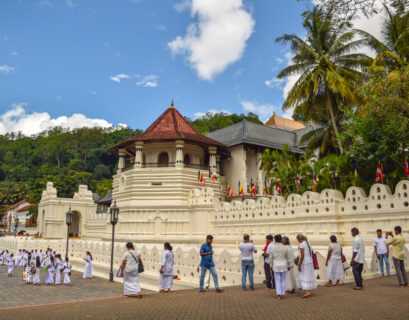A day in Kandy had given a whiff of what a journey deep into the spiritual side of Srilanka would be. Midway between the two kingdoms Kandy and Anuradhapura, Dambulla flourished as a major spiritual junction. It grew as a major point for both devotees and local farmers. The journey from Kandy to Dambulla is a scenic drive through the heart of SriLanka’s lush central region, offering glimpses of rolling hills, verdant forests, and vibrant roadside villages. As you leave the bustling charm of Kandy, the road winds through misty highlands before descending into the sun-drenched plains of the Cultural Triangle, where lies the Buddhist cave temples of Dambulla. The route, approximately 70 kms, passes through spice gardens, and tranquil lakes, offering mesmerizing views of the changing landscapes. As Dambulla nears, the towering golden Buddha statue, signals your arrival in this mystique town.
My first impressions of Dambulla
Dambulla may be underwhelming, with not much to offer, apart from the cultural hotspots I had come looking for. My first impressions of Dambulla were – vibrant, chaotic, and traditional. There is a main road, with sides streaked with bikes and tuk-tuks and overhead billboards taking every inch of space. There’s a hotchpotch of random shacks, with people teeming in, and shacks lined with vibrant fruit and veg, shirts and household items. It’s a large market town. There’s so much of unmissable human element in that road. However, set a few paces off the road, and it narrows into dusty red lanes with overgrown vegetation. And there, there’s nothing. The market town has transformed into a forgotten, rustic landscape.
In Dambulla, you don’t have to venture far to find what you came for. The UNESCO World Heritage-listed Dambulla Cave Temples are just a short distance from the main city. With the cave temples being the town’s primary attraction, I decided to take my time exploring them. And before setting off, there was always the tempting option of stopping by a nearby restaurant for a hearty plate of SriLankan rice and curry—a perfect way to fuel up for the journey ahead.
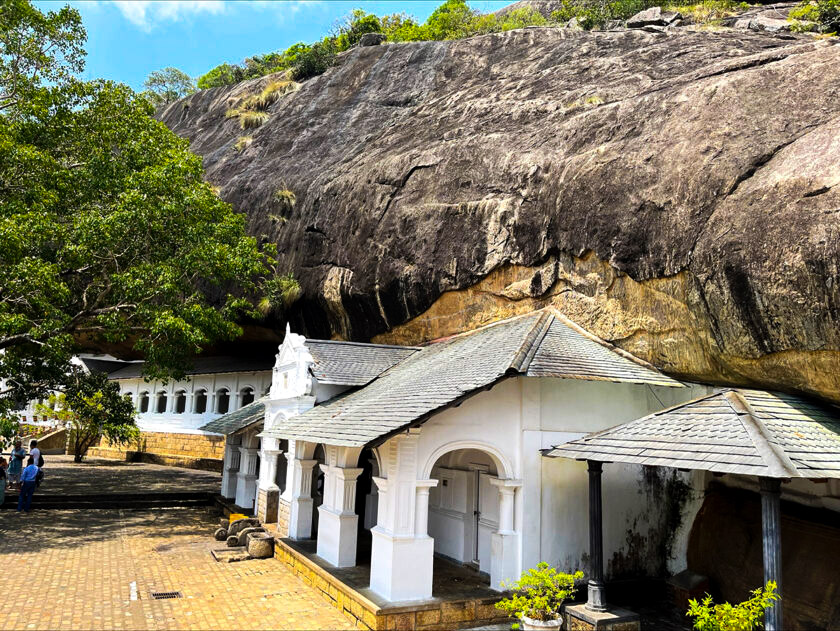

The divinity in the temples
You need to climb 364 steps to reach the Dambulla cave temples. The Dambulla caves are a series of five caves which have been converted to shrines. As you climb the 364 steps to reach the entrance, the panoramic views of lush greenery and distant hills mesmerize you. But the real marvel lies inside—five ancient caves, which have all transformed into intricately adorned shrines. The walls are adorned with vibrant murals, narrating stories from Buddha’s life, adding to the spiritual and historical richness of the experience. These caves are:
- Deva Raja Viharaya (Temple of the King of Gods)
- Maha Raja Viharaya (Temple of the Great King)
- Maha Alut Viharaya (The Great New Temple)
- Paschima Viharaya (The Western Temple)
- Devana Alut Viharaya (The Second New Temple)
Dambulla cave temples are said to be over 2000 years old. And the significance of these cave temples has not dimmed. The Dambulla temples still attract Buddhist devotees from across the globe.
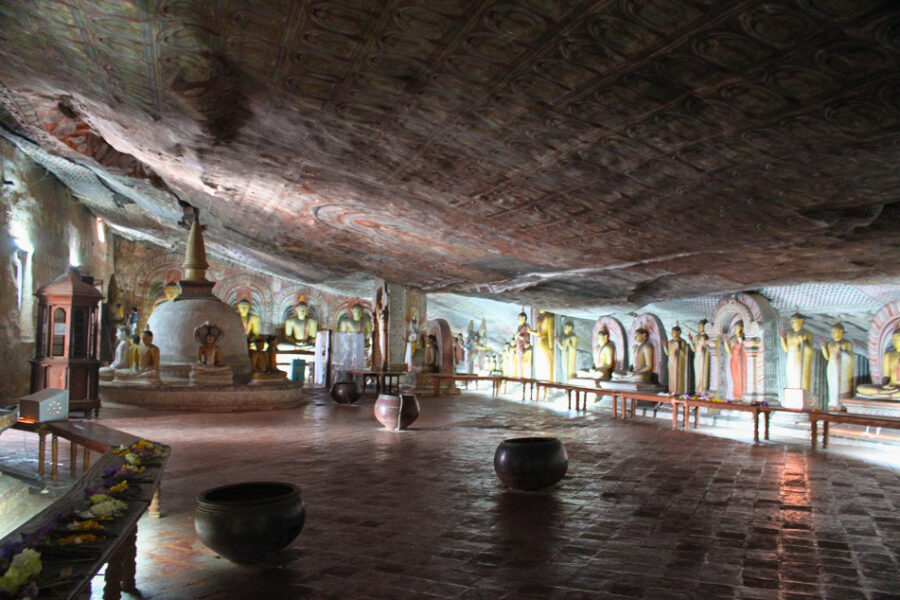
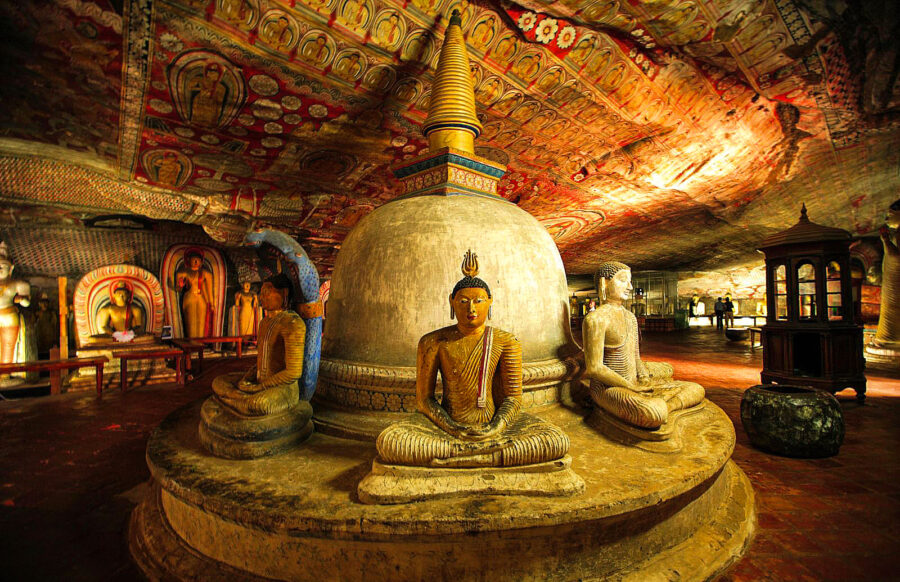
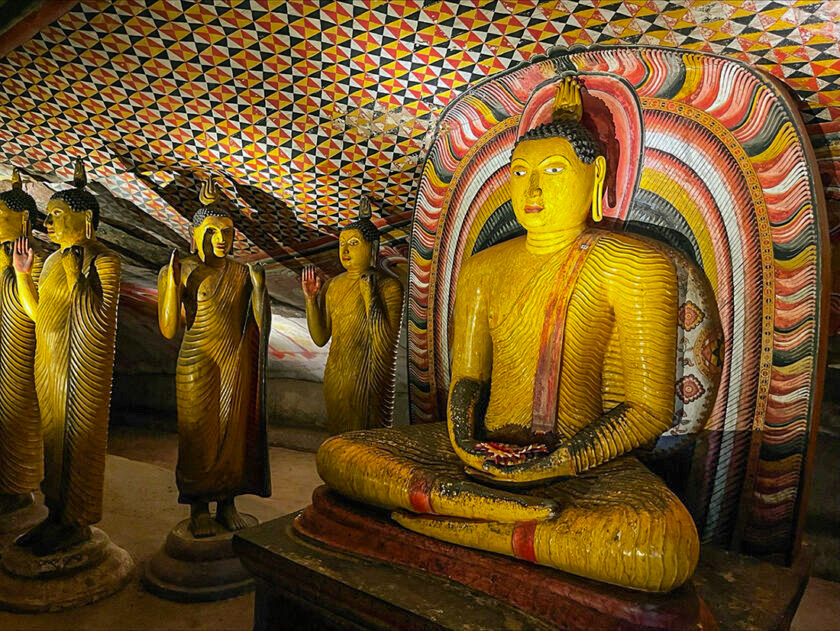
Stepping into the dimly lit chambers feels almost otherworldly. As you enter the dimly let chambers, rows of Buddha statues, some towering, others reclining in peaceful repose, greet you. The air is thick with the scent of incense sticks, and the flickering glow of lamps cast soft shadows on the murals. Around you, queues of devotees wait patiently, deep in prayer. The profound spirituality that lingers in every corner of this sacred space, will certainly sweep you.
Every inch of the cave resonates with devotion and spirituality. The stillness around you, combined with the rhythmic murmurs of prayers, take you on a transcendental journey. The murals, and the statues stir emotions, and makes you feel connected to something far greater than yourself. You will be awed by the scale and detail of the artwork on the walls.
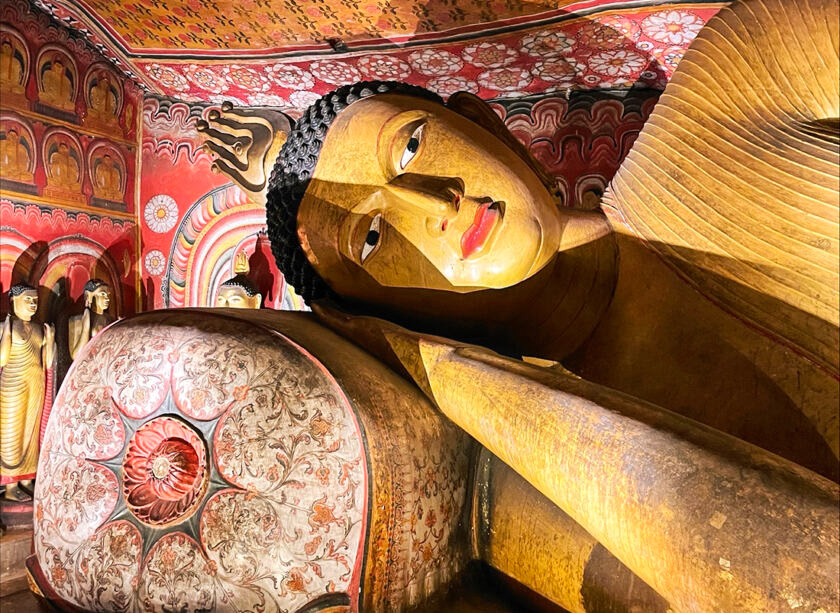
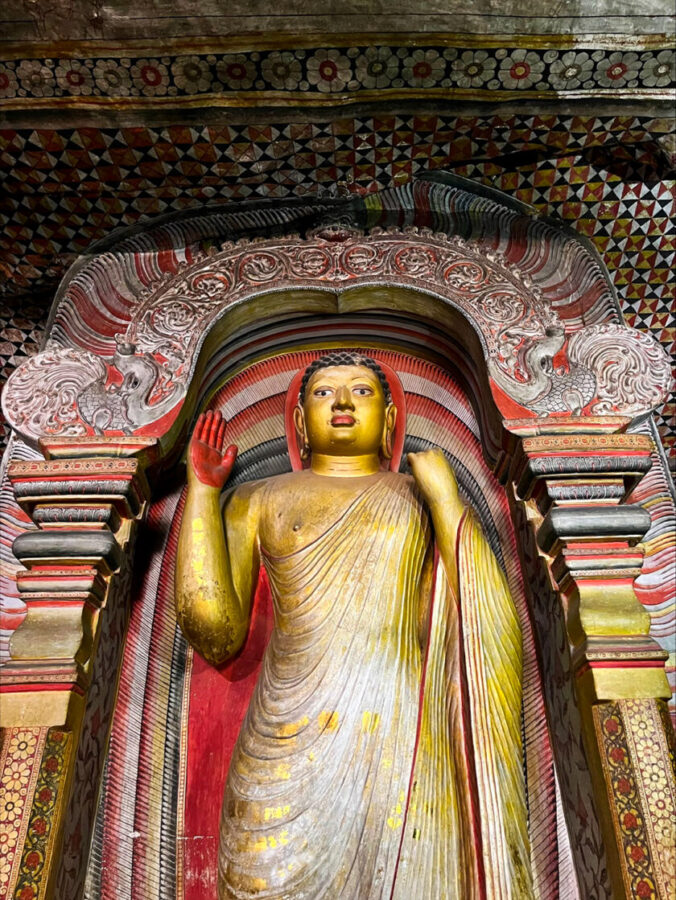
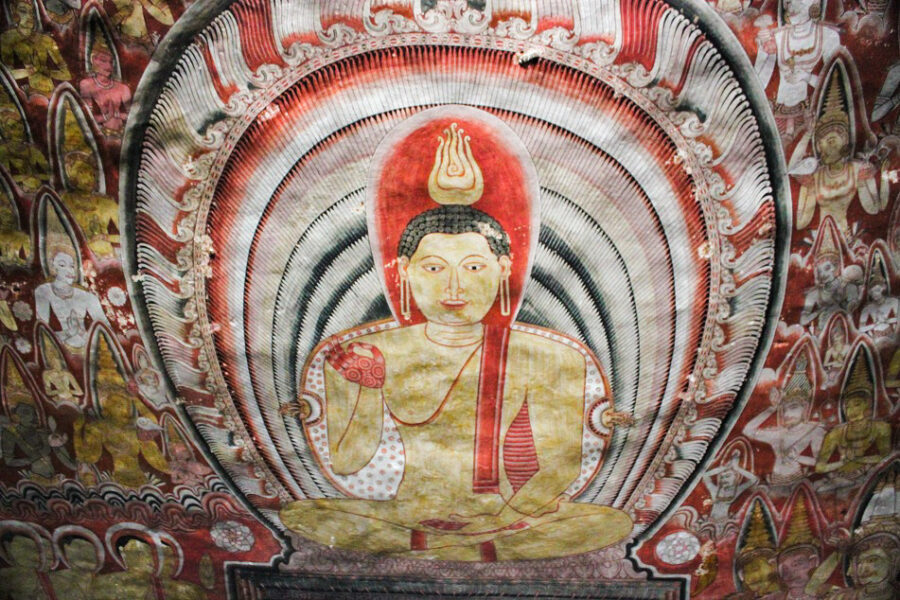
The spiritual connection you find in the temples
But more than the visual splendor, it is the deep sense of reverence in the air that lingers with you. In that very moment, you realize—this is more than just a place to visit. It’s an experience you carry with you, long after you’ve left. It may be the profound philosophy, the depth of ideas, the surreal aura that envelops you, or simply the raw realism of spirituality that leaves an imprint on your soul. And you come back laden with thoughts from the cave temples.
When planning your trip, remember that Dambulla is a step beyond art and craftsmanship—it is a reflection of the countless spiritual journeys that have unfolded within its sacred walls. You come here to not just to admire an artistic masterpiece but to embark on a deeper, philosophical journey. The aura of the place lingers, leaving you immersed in thought, long after you’ve left.

